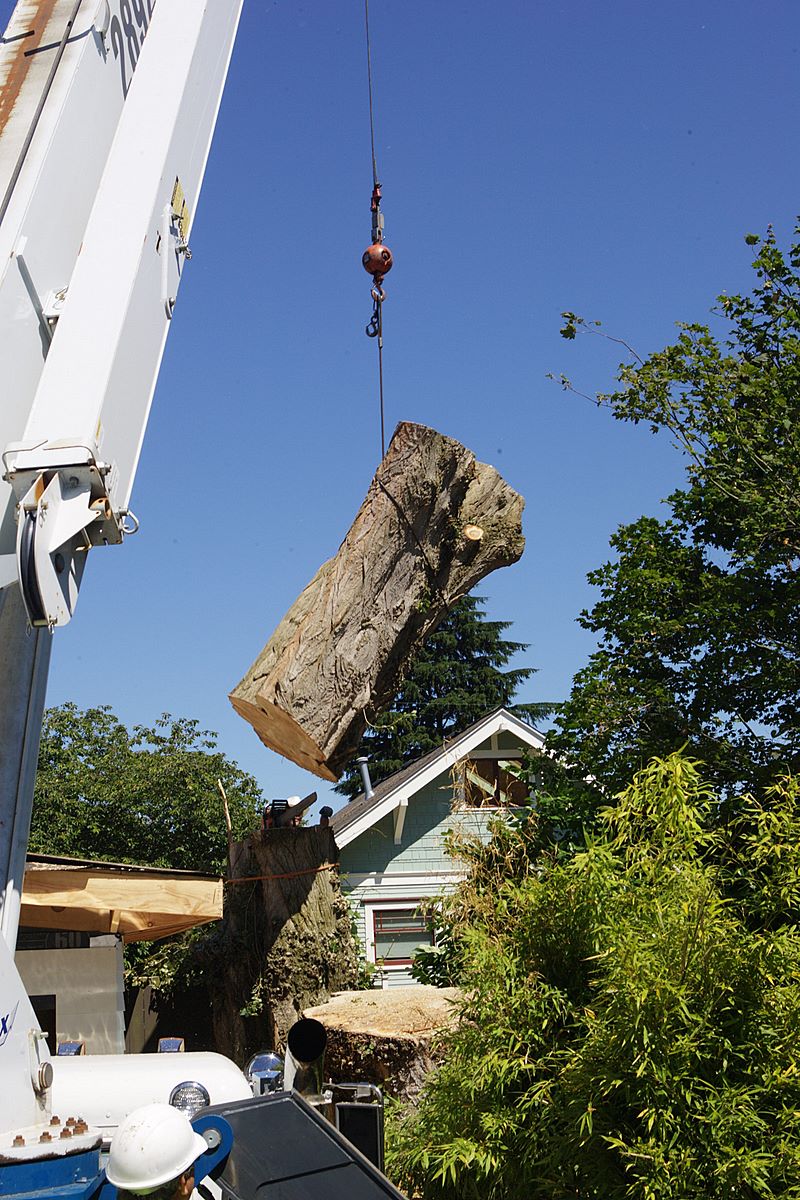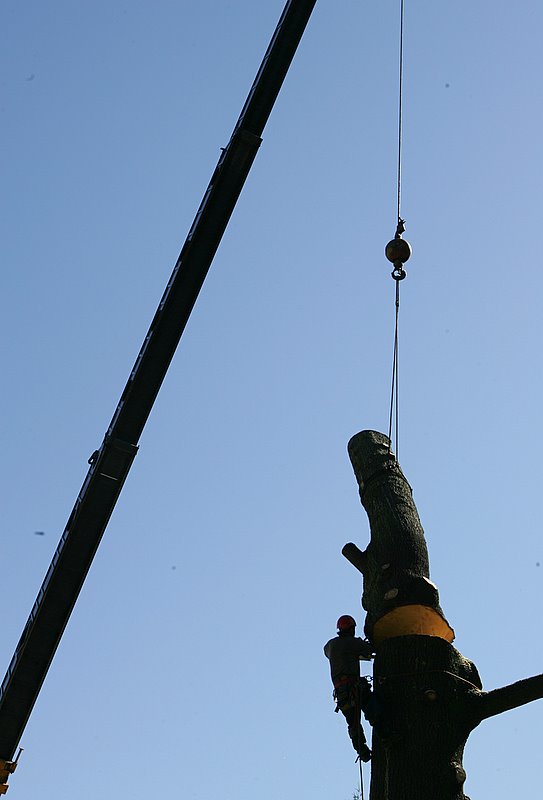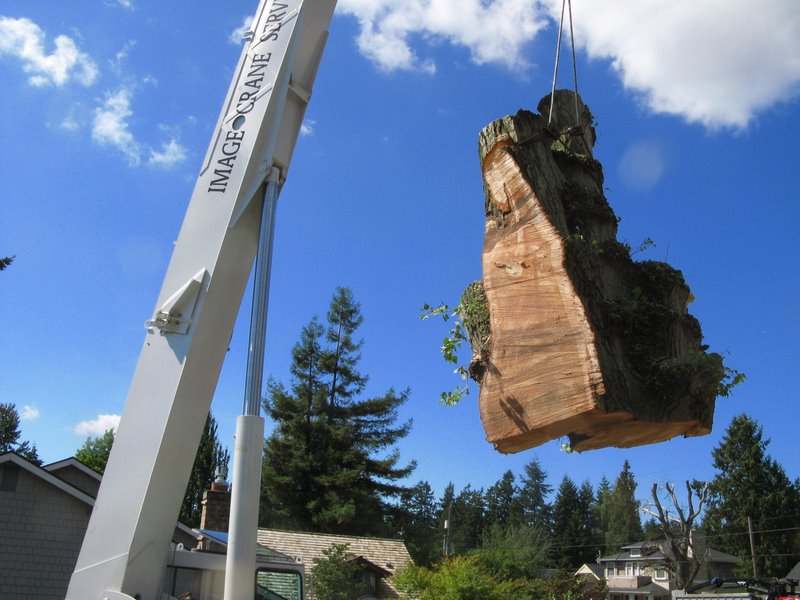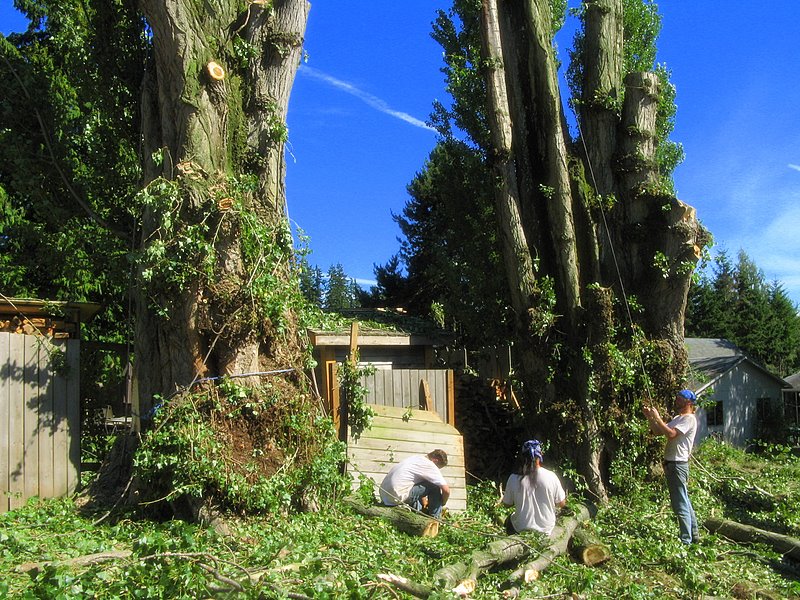It appears to be a Grove GMK 5210 or GMK5240 mobile AT .. by the counter weight configuration its rented out as a 100-125T unit..a very good 100ton class unit to boot ..not just barely..
The crane had counter weight ..that black slab on the rear of the upper superstructure.. if there was more ..its very likely that the boom may have buckled versus a tipping condition ..
the crane was shock loaded according to an article
from an operator's stand point ..the conversation of tree hoisting comes up in general discussion ..The general consensus is basically the arborist take out a general liability insurance policy towards the hoisting ,get stamped engineering of all the aspects of the operation including crane capacity, crane placement,dunnage,etc.. and the list goes on ..
main reason's some arborist are rouge, the other, its nature ..until its free no-one knows for sure what it weighs and the crane is married to it .
couple that with an arrogant cutter and crane wise ignorant crew ..and you get these picture's..
I'm sorry ..that cutter had the option to cut a smaller piece ..its a very large crane if you dont deal with cranes much, and again if a guy doesnt know the mechanic's that make crane's work ..their own conclusion's of the operator's nerve are drawn into question( he's lying,he's saying smaller to stretch the job,he's scared) and the crew will cut a bigger piece ..because its a big crane ..
500 ton cranes can be reduced to 3ton cranes easily even with 186,000lbs of counter weight on ..
Overall ..It wouldn't hurt for allot of arborist to approach the Iron Workers and Operating Engineer's ...and get some real tangible education into the world of hoisting ..it would be more than beneficial to both parties ..
just some general reading regarding the accident on other boards ..
***********************************/Forum/showthread.php?t=15430
http://forums.dhsdiecast.com/default.aspx?g=posts&t=123576&p=2




























































